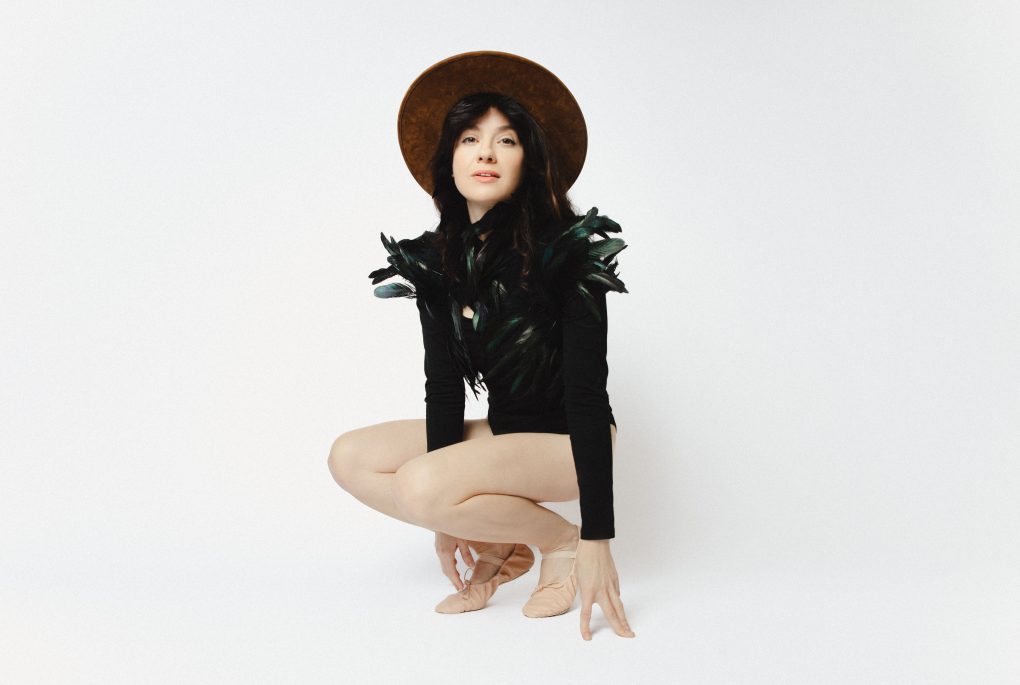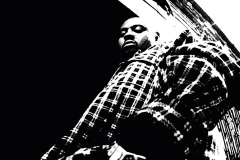Alicia Blue sits in a recording studio in Nashville, taking stock of all that’s happening. The cymbals are getting placed on the drum set, the guitars are being finely tuned, and the production crew huddle around the soundboard where they are mapping out the levels. For Blue, poetry was more the focus during her time growing up in California, with the words guiding her through some of the wearing times and reaching a level of solace. She also was an avid reader, tapping into influential authors such as Joan Didion and Jack Kerouac.
As for becoming immersed in songwriting, that came later when Blue was introduced to Malcolm Clark Hayes, Jr. The musician spent his formidable years touring with the grand Little Richard and some time was also spent recording for the legendary Liberty Records. A stroke unfortunately forced Hayes, Jr. to be confined to a wheelchair in his later years so needing a caretaker Blue accepted the position after her time in college concluded. The time spent together offered Blue to absorb the accumulated memories and life lessons of a musician and discover the direction she sought to take in her career.
After her time with Hayes, Jr., Blue went to work on our music. Releasing her debut EP in 2019, her song “Magma” was chosen by Starbucks for in-store international play followed by her first LP Bravebird in 2020. Blue’s latest EP releases Inner Child Work Pt. 1, Blue’s latest Inner Child Work Pt. 2 (out now via Magnetic Moon) emphasizes the work on herself emotionally. The fresh perspective of not allowing herself to look into things such as anxiety and depression gave way to becoming who she truly is.
You began your musical journey a little later than most. Being a poet, did you find the songwriting process easy or difficult?
I don’t think I ever found the songwriting process difficult. There are certainly challenges when you have to wait for a line or lyric to show up. Sometimes it’s not till the next day. Sometimes a song doesn’t reveal what it’s about till a week or month later. But songwriting is my favorite thing on the planet. It’s why I’m here. I get something from the process that I don’t get anywhere else in life.
Was there an underlining direction you wanted to take with the original songs that you weren’t able to with your poetry?
Sort of. I think it’s all about who you decide to make your music with. If I wasn’t making Inner Child Work with Lincoln Parish, my songs and lyrics would have turned out to sound completely different. He brought the underlying grit I was looking for in the chord progressions and arrangements. It matched the turbulence of my lyrics.
What kind of music did you get exposed to growing up? Listening back to some of your favorite artists now, as a developing artist yourself, is it clear what you took away from those experiences?
My dad was the main music person in the house. Infinite amounts of Sam Cooke. He was listening to him to learn English when he left Mexico to marry my mom here in the States. Then there was “Canciones De Mi Padre” by Linda Ronstadt. That record is all in Spanish, all mariachi music, and I can recognize those melodies in my sleep. I had no idea what she was singing about, but it didn’t matter. The music is intense, tragic, and passionate. Not unlike the folk music that I was introduced to later. I was introduced to “The Hurricane” by Bob Dylan when I was 13 and became obsessed. I was shocked to learn he was telling a true story and to learn that music could do that. That’s when I became addicted to this type of experience. Then came Joan Baez with tragic narratives in old folk standards. I was about 17 when I heard “Railroad Boy” or “Lily Of The West” by Joan. The sadness and soberness were my world. It was something I could identify with as a teenager. I’d say what I took away was the soul of Sam Cooke and Linda and then the narratives I heard in folk. To sing the narratives but with a soul texture.
Having been in Nashville for a short time, I don’t doubt that you have witnessed the long-standing history of music etched in the town’s identity. Did knowing what’s been created there in the past (and present) spark your decision to move from Los Angeles?
Knowing what was created here in Nashville in the past is not exactly why I moved here, although it’s insane. But Nashville was and is about the song first. Of course, the greatest artists transcend personality and even transcend their songs. But you’ll never find any of them with a bogus song. That’s the wheelhouse I try to come from. I also needed to leave my hometown. Straight up, leave, and start fresh.
Mental health has finally become a topic at the forefront of mass consciousness for a few years. Still, some groups argue that it’s all about being soft and not wanting to push through our issues. When did you realize that you wanted to begin focusing on your mental health?
I realized this in 2019 when I was making my first record. I kind of was falling apart in the studio because the songs and the music were serving as my therapy sessions. How awesome that can happen, but I knew I wanted music to be more than that. I wanted it to be that, without dragging the crew through the process every time, and I also wanted it to be the career of my dreams that I’d seen in my mind’s eye for the last 7years. I knew I’d have to get everything in line. Mind, body, and soul.
Have you discovered speaking with a mental health professional has allowed you to be more open-minded when writing?
Absolutely. It’s been essential.
I love the idea of separating the two parts of Inner Child Work. I looked at it as when Beck released Sea Change and, years later, Morning View. At the beginning stages of Inner Child Work Pt. 1, was their discussion to have Part 2 be combined?
Yes, we just went in to make a record and then found these sorts of themes that created a unit for Part 1 and then Part 2.
Would Part 2 have had a different vibe if connected directly to Part 1?
It’s hard to say. We treated each song as its own universe. Because of that, they stand alone sonically and individually from each other. The parts that unify the songs in Part 1 and 2 towards each other are the essence of each of them. The turbulence and peace, or lack thereof. Part 1 is a person unresolved. Part 2 is a person who can feel the dust is finally settling.
Writing with Lincoln and John must have been surreal. What did you learn about songwriting from these two?
So much. Mostly just to be present and stay out of my head. Without that, there is no song. At least not a good song.
Were there any artists or albums you spun as inspiration during the writing for Part 2?
Lincoln and I had definitely talked about the obvious great records of my contemporaries and what made them work. Artists like HAIM, Phoebe Bridgers, and then, of course, Folklore by Taylor Swift. I’m so vastly different from these artists that the things we pulled from them were the tools to help my poems sit in a more accessible vernacular. If I stayed with Dylan or Joni as my only sonic references, I’d be missing out on a whole world of color.
What were some of your favorite moments recording Part 2?
Young was magical. 3 takes with the band, and there it was. Kind of a spiritual experience.
Do you feel closure now the Inner Child Work series has been released?
A billion times, yes.
Photo Courtesy: Tammie Valer









Social Media